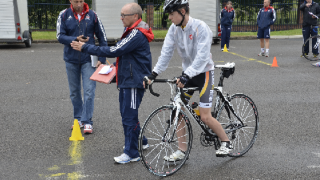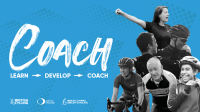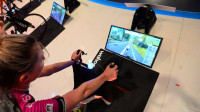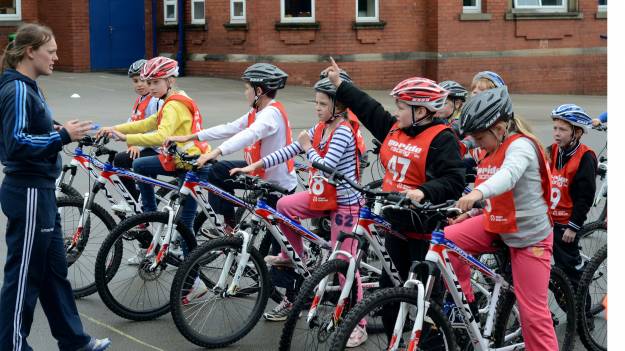The Great Britain Cycling Team (GBCT) Olympic Talent Programme supports the development of talented young riders. Here, we look at how they decided if a rider is ‘ready’ for this level of progression.
Above: Riders were put through their paces by top British Cycling Coaches.
Hard-wire
In the case of the current crop of GBCT Olympic champions, such as Jason Kenny, Dani King and Laura Trott, there can be as little as five years from entering the programme to performing on the world stage. This level of progression requires those talented individuals to be identified, but of equal significance is ensuring that they are developed with the right qualities at the right time – and five years isn’t much time to hard-wire that champion!
More than an engine
Back in 2002, a retiring elite rider fresh from the Commonwealth Games, Tim Buckle knew what it meant to be ready for major competitions. His own development as an elite bike racer had not followed the conventional path – beginning racing as a 27-year-old fourth category rider in 1998, he was racing international competitions within a year. However, Tim lacked the technical and tactical skills of his peers, who had been racing since the youth and junior ranks. Having worked hard to become more than just ‘an engine’, Tim not only understood that successful riders needed to be physically talented, but also technically and tactically skilful. As a GBCT rider, he also understood how coaching support can influence development, as well as the levels of organisation, mental strength and work ethic that are required to succeed at the highest level.
Engaging coaching activities
This experience guided Tim as he began working as a Talent Team Coach for the West Midlands region. He also made a significant observation – the good riders were most commonly from facility-based clubs, with motivated coaches and plenty of engaging coaching activities. Therefore, supporting both the riders and the coaches in clubs is key to the rider development process. Tim and his Talent Team colleagues worked to share best practice equally between these Go-Ride clubs. In an open dialogue between rider, club coach and talent coach, the riders were given clear objectives – and the club coaches provided with clear direction on how to facilitate this development.
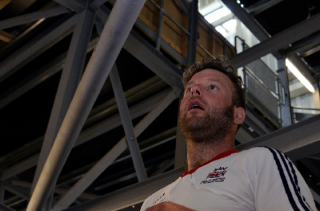
Tim Buckle casts an eye over the up and coming riders
The standards
The continued sharing of practise with Go-Ride club coaches and riders led to the introduction of the Regional Schools of Racing programme (RSR). This programme brought the Go-Ride clubs and riders together, allowing the Talent Coaches to deliver sessions to riders across a region or regions. The intention was to give additional, specific focus and a coaching model for riders and coaches to take back to the club, to continue their development work. This lead to a set of refined objectives for riders and coaches to work towards, which was packaged as a well known nutty chocolate bar. The chocolate bar represents the complete bike rider and the ingredients represent rider qualities.

What is 'ready'?
Club coaches are asked to nominate the riders they feel are performing to, or working towards the named standards, who then attend RSR. Unexpectedly, this highlighted disparities between the levels of performance across riders from different clubs. Some clubs had more riders ready to attend RSR’s than they could nominate. Others, however, were nominating riders who simply were not ready. This highlighted the need to provide explicit information on what is ‘ready’?
Working with feedback from a number of Go-Ride clubs, Tim and the Talent Coaches developed the original standards into ‘The Readiness Document’ – three pages of qualities and attributes required by youth riders wanting to progress to become top bike racers. Supported by the RSR delivery and delivery of workshops by the Talent Team, the objectives of this document are to:
• Show riders what they need to be good at to succeed
• Benchmark what ‘good’ is for each aspect of on and off the bike performance
• Show parents what their children are striving to achieve and how they can support their development
• Show coaches what elements they need to focus on with their coaching activities
Benchmarking standards
Clearly, physical data is easy to quantify, however aspects such as tactics, skills, lifestyle management and organisational qualities become a little harder to measure and define. However, with the experience gained from over 10 years of developing talented bike riders and working with the active coaches in the Go-ride clubs, these attributes have now become clearly defined and compartmentalised, with essential sessions clearly sign-posted.
This summer, youth riders and Go-Ride club coaches were invited to the National Cycling Centre to play a significant step in refining this Readiness Document – piloting the protocols that make up the physical and technical benchmarking activities. The aim is to enable coaches and riders to define what is good, and importantly have the tools to know how to get better.
In the next coaching newsletter, we’ll give you an insight into the activities the Readiness day covered and how this can be used within club coaching activities.

